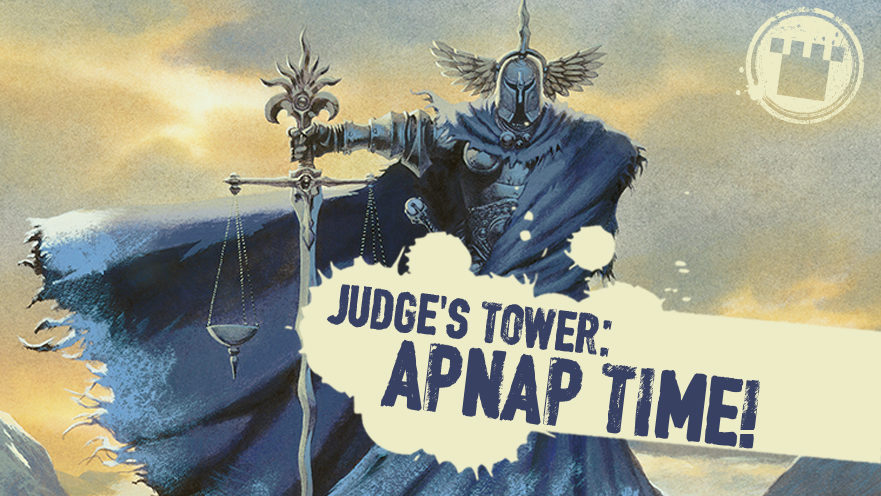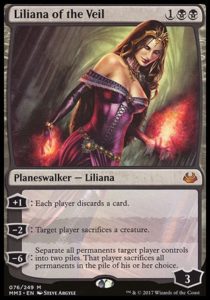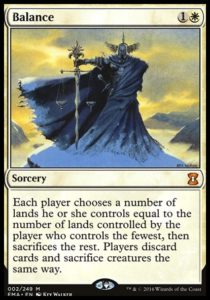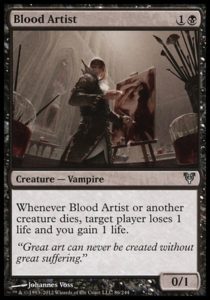APNAP (Active Player/Non-Active Player) is one of those little rules things underpinning Magic that serves to hold everything together without drawing too much attention to itself. It’s one of the many bits that lets the game function without becoming a tangled mess of unclear priority passes, garbled timing, and…The Batch. For anyone who played prior to the Sixth Edition rules updates, I’m sorry for the flashbacks. For anyone who didn’t play back then, well…look at this.
We referenced APNAP in the last Judge’s Tower article, but here’s the actual rules text again for clarity’s sake:
“101.4. If multiple players would make choices and/or take actions at the same time, the active player (the player whose turn it is) makes any choices required, then the next player in turn order (usually the player seated to the active player’s left) makes any choices required, followed by the remaining nonactive players in turn order. Then the actions happen simultaneously. This rule is often referred to as the “Active Player, Nonactive Player (APNAP) order” rule.”
Seems pretty straightforward, but there are a few nuances that go along with APNAP that help keep things fair. For example:
SCENARIO 1
Addy is playing against Ned in a game of Legacy. Addy controls a Liliana of the Veil, and activates her +1 ability, causing both players to discard. Addy chooses a card out of her hand, and sets it aside face-down. Ned says that he’s waiting to see what she discards before he makes his choice, at which point Addy calls a Judge.
Does Ned get to see what Addy discards before he makes his choice?
ANSWER
Nope! He’s going to have to discard in the dark, and hope he doesn’t pitch a relevant card.
The part of the APNAP rule above which affects this is the phrase “then the actions happen simultaneously.” All players make their choices, then take the required action. Addy technically has to choose which card to discard first, but she doesn’t actually discard it (revealing the information of what card she chose) until Ned has made his choice as well, and both of them discard their cards at the same time.
Sometimes, however, the Active Player does have to give up some amount of information due to this rule.
SCENARIO 2
Addy and Ned are still playing, but this time at a Vintage event. Addy controls three lands, three creatures, and has six cards in her hand. Ned has five lands, one creature, and five cards in hand. Addy draws her card for the turn, and casts Balance.
How will this resolve? What does Ned get know before he starts making his choices?
ANSWER
Addy has to make all of her choices first, so she’ll choose two lands to sacrifice, two creatures to sacrifice, and one card to discard. (In this scenario, she drew up to seven before casting Balance, bringing her back down to six cards in hand). Addy doesn’t have to reveal which card she’s discarding, but does have to clearly indicate which card from her hand she is choosing (as in the previous scenario, where she set it aside face-down). Since the lands and creatures are open information on the battlefield, Ned will get to see which of her lands and creatures she is choosing to sacrifice, even if the sacrifice won’t happen until Ned makes his choices as well.
So, Addy does have to give up a bit of information, which could influence the choices that Ned will make.
APANP can affect more than just the order in which simultaneous choices are made – another time where it comes up is when multiple players have triggers that would go on the stack at the same time.
SCENARIO 3
Once more into the breach with Addy and Ned, who are back at Legacy, this time playing a Zombardment mirror-match. Both players control a Blood Artist, along with two Bloodghasts on Addy’s side and two Deathrite Shamans on Ned’s. Ned is tapped out. Addy draws her card for the turn, and plays Massacre for free (Ned controls a Scrubland). Both players are at six life.
What are both players’ life totals after Massacre and all the Blood Artist triggers resolve?
ANSWER
Ned will have won the game at this point, and in the end, he’ll be left at twelve life once Addy’s life total hits zero.
Both players’ Blood Artists trigger at the same as all six creatures on the battlefield die. As a bunch of stuff is trying to go on the stack at the same time from both players, we use APNAP order to determine what goes where. First, Addy puts all six of her triggers on the stack in whichever order she chooses, then Ned puts his triggers on the stack. All of Ned’s triggers therefore end up above Addy’s on the stack, and so drain Addy of her life before her triggers have a chance to even things out.
As you can see, understanding APNAP is important – in this case, it cost Addy the game.
That’s it for this edition of Judge’s Tower. Next time, since I named the column after the format, I’ll be writing about Judge’s Tower itself. It’s a fun format…for a very specific definition of “fun.” If you have any interest in becoming a Judge, I found it immensely helpful for hammering a lot of the rules into my head. I’ll highlight some cards and strategies for building your own Judge’s Tower (with some tips on how to do it without breaking the bank, as well).
Header design: Justin Treadway
Header image: “Balance” by Kev Walker

Chris is the Marketing Communications Coordinator (and editor of the blog) at Card Kingdom. He would like to apologize to his son for not holding onto more cards from when he first started playing, as that likely would have paid for college. He enjoys pretty much all formats of Magic, but usually ends up playing decks that make other people dislike playing those formats with him.




